Welcome to our blog dedicated to helping you achieve the best results in your gardening endeavors. In this article, we will explore the benefits of using an all-natural, organic tomato fertilizer that comes with an added calcium boost. By the end, you’ll have a clear understanding of why this combination is essential for promoting healthy tomato plants and yielding a bountiful harvest. We will cover the importance of organic fertilizers, the specific advantages of calcium for tomato plants, and share some practical tips for application. Whether you’re a seasoned gardener or just starting out, this guide will provide you with valuable insights to enhance your gardening experience. Let’s dive in!
The Best Fertilizer to Use for Tomato Plants
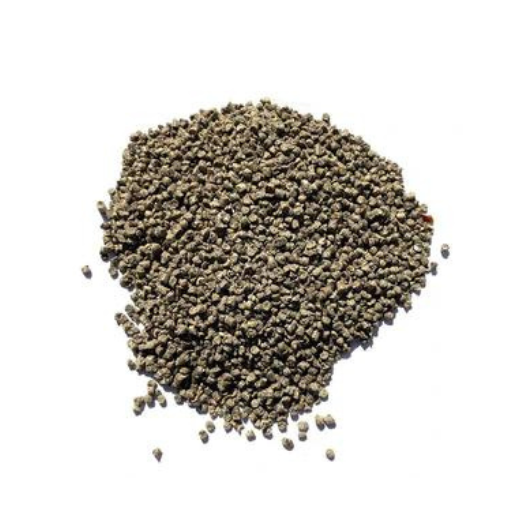
Comprehending Organic Fertilizers for Tomatoes
To build strong tomato plants, it is important to use organic fertilizers like compost, manure or bone meal which are derived from natural sources. These fertilizers release nutrients slowly, ensuring a steady supply of nourishing compounds that promote the growth of healthy roots and leaves. Unlike synthetic alternatives, organic fertilizers improve soil structure and support microbial activity hence resulting in high water retention capacity. Besides minimizing chemical buildup risks due to their natural composition, these types of fertilizers promote environmentally sustainable gardening practices. When you go organic, you safeguard the durability of your tomatoes as well as the ground they are planted on.
Benefits Derived From Using Natural Ingredients
When making fertilizer for tomato plants using ingredients that are specifically organic has several advantages. First and foremost, they enrich the soil with essential nutrients required for growth without risking contamination by chemicals. Secondly, organic manures make soils more porous enhancing its water-holding capacity which is vital for maintaining sustained plant growth in tomatoes. Thirdly, such naturally occurring substances breed positive microbial activities that boost biodiversity within the ecosystem. This results into having a balanced ecosystem with reduced chances of diseases among others thus promoting this notion about using natural means to enhance fertility in our farming systems and other ecological surrounding areas. Finally by incorporating eco-friendly garden practices into your home-based cultivation methods ensures sustainability in all aspects benefiting both environment and garden.
How To Select The Best Tomato Fertilizer For Your Garden
When deciding on the best fertilizer for your tomato garden remember to consider requirements; plant type and soil properties should be taken into account too. Seek organic fertilizer because it strikes balance between nitrogen phosphorus potassium ratio which is an important requirement to look out for when choosing such kind of products intended for tomatoes planting only 5-10-10 or 10-10-10 formulas are commonly recommended as far as this vegetable goes; however there could be some additional nutrients like calcium magnesium which can help minimize blossom end rot while boosting entire plant growth. On the other hand, a few organic alternatives to consider might include fish emulsion, compost and seaweed extract. The application of soil tests before the addition of nutrients may ensure that right mixtures are used for better yield on more productive tomato plants.
Benefits of Calcium for Tomato Plants
The Function of Calcium in Plant Growth
Calcium is an element which plays a vital role in the overall health and growth of tomato plants; it is necessary for strengthening plant cell walls for structural support and stability, it also helps in the proper functioning of cell membranes that facilitate efficient movement of nutrients and water within the plant. A deficiency can cause such issues as blossom-end rot, where dark sunken spots appear on developing fruits. This important nutrient is also involved in enzyme activity and serves as a secondary messenger in various physiological processes. By using organic fertilizers or soil amendments like gypsum or crushed eggshells to put enough calcium into the ground, there will be a big improvement in the health of plants and their yield.
Calcium’s Role in Preventing Blossom End Rot
Blossom end rot is a common problem affecting tomatoes characterized by dark sunken areas on fruits. Primary reason behind this disorder is inadequate availability of calcium thereby interfering with its cell wall development resulting into tissue disintegration. Poorly developed fruits due to lack of calcium are responsible for those ugly and harmful signs called blossom end rot. Therefore, there should always be consistent soil moisture levels as well as constant supply of calcium to prevent such condition from occurring. This can be achieved through gypsum or calcium nitrate added to the soils as well as composts that enhance nutrient uptake by adding organic matter. Regular soil tests and proper fertilization practices will help maintain adequate levels thus minimizing risk factors associated with blossom-end rot while maintaining healthy productive tomato plants.
Sources of Calcium In Organic Fertilizers
Organic fertilizers rich in ca can significantly boost plant health and prevent deficiencies by providing much needed ca to them; they include:
- Gypsum: Enhances soil structure for better drainage while increasing its ca content without changing ph level significantly.
- Crushed Eggshells: These are great sources one can go for since they have plenty of caco3; when finely crushed before being mixed with soil, they release calcium slowly thus favoring plants’ development.
- Bone Meal: A good source of phosphorus and calcium is derived from bone meal which is prepared from crushed bones of animals; it mainly enhances root growth in addition to flower formation.
Through these gardening practices you can supplement your soils with organic sources of ca which will make your crops healthier and more productive by maintaining sustainability.
How to Prepare Soil for Planting Tomatoes?
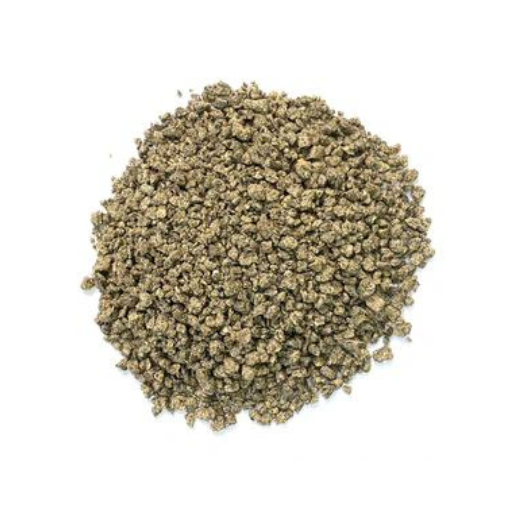
Soil Test
Conducting a soil test is the first and foremost step in preparing the soil for growing tomatoes. It will help you determine what nutrients are present, ph levels of the earth as well as other important characteristics so that you can make informed decisions on what amendments or fertilizers are necessary.
- Sample Soil: Take small amounts of the soil from your garden using a clean trowel at depths of about 6-8 inches at various spots. Combine these samples together thoroughly in a clean pail to obtain composite sample.
- Soil Drying: Place the mixed sample on a clean surface and allow it to dry by itself. Ensure no impurities such as roots or stones are left behind with this sample.
- Test Kit Usage: The instructions provided by your soil testing kit should be followed. In most cases, one has to fill containers for dried soil samples provided by the kit with them after which solutions for testing should be added. Shake or stir as directed before waiting for results.
- Analysis of Results: The results will show if your soils pH is too high or low and its nutrient content too. Tomatoes need slightly acidic soils which range within 6.2 – 6.8 pH values only! When it comes to amending your field to achieve this desired ph level also ensuring adequate nutrients, rely on these outcomes.
- Amend if necessary: Based on the findings, there may be need of adding organic materials, lime (to raise pH) , singles (to lower pH), specific fertilizers to address any deficiencies of some nutrients.
Routine soil tests ensure that proper conditions for growth are maintained so that tomato plants have every opportunity to grow healthily and productively during every season.
Organic Fertilizer Soil Amendment
Incorporating organic fertilizer into your garden’s natural environment can greatly improve its quality and fertility making it rich in all vital substances needed for healthy growth of tomato plants. Below are essential steps of soil amending with organic fertilizer:
- Select the Right Organic Fertilizer: Choose an organic fertilizer that corresponds to your soil’s requirement basing on results of its test. Compost, well rotted manure, bone meal, blood meal, fish emulsion are examples of such fertilizers.
- Fertilize: Apply organic fertilizer evenly over the surface of the ground. In most cases 2 – 3 inches of compost or manure will be sufficient. Follow application rates given by label for specific types like bone meal or fish emulsion.
- Incorporate into Soil: Use a garden fork or tiller to mix the organic fertilizer into the top 6-8 inches layer of soil. This ensures that all nutrients are spread evenly in the root zone where they can be easily accessed by tomato plants.
- Water Soils: Water after amending soil until it is saturated. Moisture helps organic materials decompose and release their nutrients for easy uptake by crops.
- Keep Watch and Maintain: Continuously monitor condition of your soil and replenish required quantities during every growing season using organic fertilizers as necessary to maintain nutrient levels as well as good state of the soils.
Using organic fertilizer also enhances nutrient quality in addition to structure improvement, water retention and microbial activity thereby creating an ideal habitat for thriving tomatoes.
An Effective Way of Improving Soil Texture with Compost and Manure
Improving soil structure by composting it through manures is an effective way of establishing a solid gardening basis. By adding organic matter to the soil, the compost improves its texture, aeration, and retention of water. It also provides for essential nutrients which release slowly as the compost decomposes. When well-rotted, manure contributes to nutrient content and improves soil structure by increasing microbial activity. This kind of microbial activity further decomposes organic material thereby enhancing fertility of soil thus promoting healthy growth of roots for your plants. If you keep on adding compost and manure into your ground on regular basis, you will end up having a better drainage system and aerated soils that are going to give rise to strong crops that will yield abundantly at harvest time.
Best Practices for Applying Tomato Fertilizer
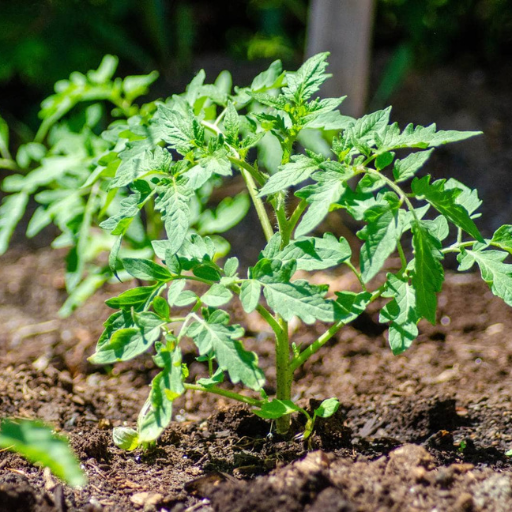
Slow-Release Fertilizers
The use of slow-release fertilizers for tomatoes can provide a constant supply of nutrients over time, promoting even growth and reducing the need for frequent applications. These fertilizers are usually coated with a polymer or sulfur-based layer that determines how fast nutrients can be released to the soil. Hence, plants obtain an equal diet without the danger of nutrient burn often attached to the rapid release fertilizers.
To use slow-release fertilizers effectively:
- Get The Right Fertilizer: Seek out balanced slow-release fertilizer containing basic plant nutrition such as nitrogen (N), phosphorus (P) and potassium (K). A standard recommendation is 10-10-10 or 14-14-14 blend for tomatoes.
- Apply During Planting: Mix slow-release fertilizer into tomato soils at the bases of individual plants when planting – follow instructions on package in respect to dosage.
- Follow Up With More Applications: Depending on the product used, one may have to reapply such fertilizer midway through growing season. Always adhere to guidelines provided by manufacturer.
- Water Consistently: Moisture steady helps break down and disperse slow-release fertilizers’ nutrients into soils. Strive to keep soil damp but not soggy.
Slow-release fertilizers ensure continuous availability of essential nutrients necessary for strong vegetative growth and increased fruiting in your tomato plants.
Liquid vs Granular Fertilizers
When choosing between liquid and granular types of manure for your tomato plants you must first recognize their separate merits and uses. Typically, liquid fertilizers are mixed with water and applied directly onto either soil or leaves. This allows plants take up nutrient elements immediately which is useful especially if one needs to address nutrient deficiencies urgently. Moreover, liquid manures allow more precise control over nutrient application and can be easily incorporated into normal watering routines.
On contrast, granulated manures are put on topsoil or mixed together with it; they release minerals more slowly over time thus being beneficial for an even supply of nutrients throughout the growing season. Granular fertilizers are usually applied less often than liquid ones especially those slow-release types and can be a convenience to some gardeners.
Both types have their place in a comprehensive fertilization strategy. Use liquid fertilizers for a quick nutrient boost or to correct deficiencies, and rely on granular fertilizers for consistent, long-term feeding. By using both forms you enable your tomato plants grow with balanced nutrition that serves them best.
Application Timing for Optimal Nutrient Uptake
Timing of applying fertilizer right is very important in order to maximize the nutrients uptake in tomato plants. In general it is advisable to start by initially manuring tomatoes at planting time. This gives young plants a nutrient boost to support strong root and shoot development. Then, liquid manure applications every fourteen days during the growing season help address nutrient deficiencies while promoting vigorous growth.
For granular fertilizers, consider applying a balanced fertilizer at planting and then again when the plants start to set fruit. This usually involves initial application worked in at planting and later side-dressing around the base of plants once they have started flowering and fruiting. Slow-release granulars may only require one dose at planting which provides continuous supplies of minerals throughout the season.
The specific nutritional needs of crops and the timing of optimum nutrient application could be obtained by carrying out regular soil tests. To supply your plants with the nutrients they need to perform at their best, adjust the timing of your fertilization schedule according to the growth stage and health status observed in your plants. Finally, for more abundant yields and healthier plans, optimizing nutrient uptake requires careful time management for fertilizer application.
How to prevent tomato blossom end rot
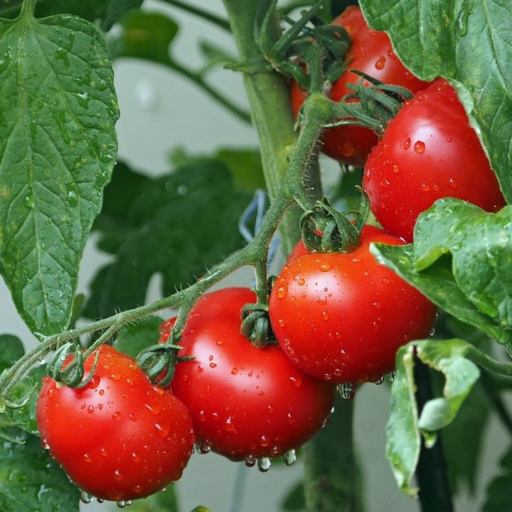
Examination of the Causes of Blossom End Rot
Deficiency in calcium during fruit development is the primary cause of blossom rot. In my experience, this problem results from occasional watering practices which bring about fluctuation in soil moisture and prevent a plant from absorbing enough calcium. Furthermore, utilization of high-nitrogen fertilizers can make the situation worse through encouraging foliage luxuriance at the expense of fruit viability. Keeping consistency in soil moisture, avoiding over-fertilization and in some cases adding calcium directly may all be helpful in reducing or even preventing blossom end rot on tomatoes. To also maintain optimal conditions for sound fruit development, it is important to undertake regular soil tests and amend soils with organic matter.
Ensuring Calcium Adequacy
One key preventive measure against blossom-end rot is ensuring that your tomatoes get enough calcium supply. Firstly, I always water deeply and frequently to ensure that there is consistent soil moisture especially during drought periods so as to allow for proper absorption of calcium. Moreover, I do not use high-nitrogen content fertilizers since they amy badly affect nutrient absorption by the plants. Some products like calcium nitrate or powdered lime are sometimes applied directly on plants to address their need for calcium but such applications must be done cautiously as per instructions provided on them. Additionally, adding organic matter improves soil structure as well as availability of nutrients within it. Regular testing of my soil helps me adjust how much fertilizer I use on my tomato plants so that they remain healthy and productive.
Consistent Soil Moisture Maintenance
To avoid blossom end rot in tomatoes, consistent moisture content should be maintained in the soil. Having read widely and being a tomato farmer myself, I know that when it’s too hot and dry, I need to water my tomato plants heavily and often. One inch deep watering per week will see most plants soaking up necessary water into their root system areas. By using mulch made out straw or compost one can keep the soil moist thus reducing evaporation. I also feel the soil to check the level of moisture—when the top inch feels dry, I know it is time to water. These practices help ensure my tomato plants remain healthy and productive as they are always provided with a steady supply of water.
Frequently Asked Questions (FAQs)
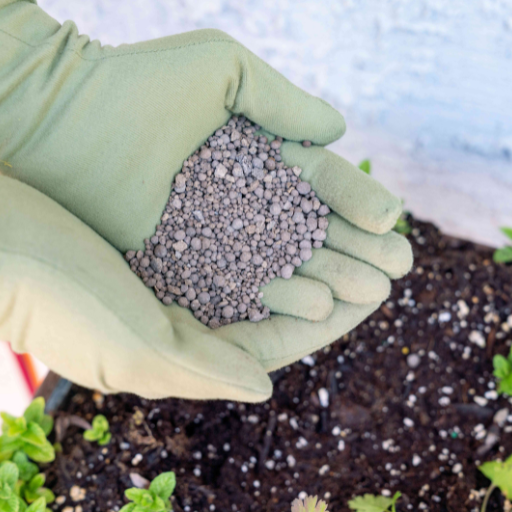
Q: How should this fertilizer be applied to my vegetable garden?
A: The best way to achieve this is through the application of fertilizer on the soil before planting. One can sprinkle one tablespoon per plant, the recommended dosage and mix it well into the ground around each plant.
Q: Can I apply this fertilizer to all types of fruits and vegetables?
A: Yes, All-Natural Organic TomatoFertilizer with Calcium Boost can be used for various kinds of fruits or vegetables. Therefore, it is made from organic ingredients that are entirely natural in growth and safe and beneficial for your garden’s plants.
Q: What is the guaranteed analysis of this fertilizer?
A: The information disclosed by guaranteed analysis about nutrient content found in fertilizers. It includes total nitrogen (N), available phosphate (P), and soluble potash (K) which are critical for plant food and soil health.
Q: Can I use this fertilizer during the entire growing season?
A: Yes, you can use it throughout the growing season to keep nutrient levels up and support continued growth and fruit production. These regular applications will ensure that your plants get all the nutrients they need
Q: What do customer reviews say about how effective this organic fertilizer is?
A: Customer reviews usually emphasize on how effective it has been in improving their plants health. A lot of users have experienced better flower/fruit development as well as stronger healthier plants generally.
Q: How does this fertilizer support beneficial soil microbes?
A: Essential nutrients that enhance beneficial soil microorganism growth are provided by these organic components like feather meal, alfalfa meal, bat guano, kelp meal etc. This is because these organisms increase fertility of soils thereby promoting a healthy environment for great food production for plants and vegetables especially.






